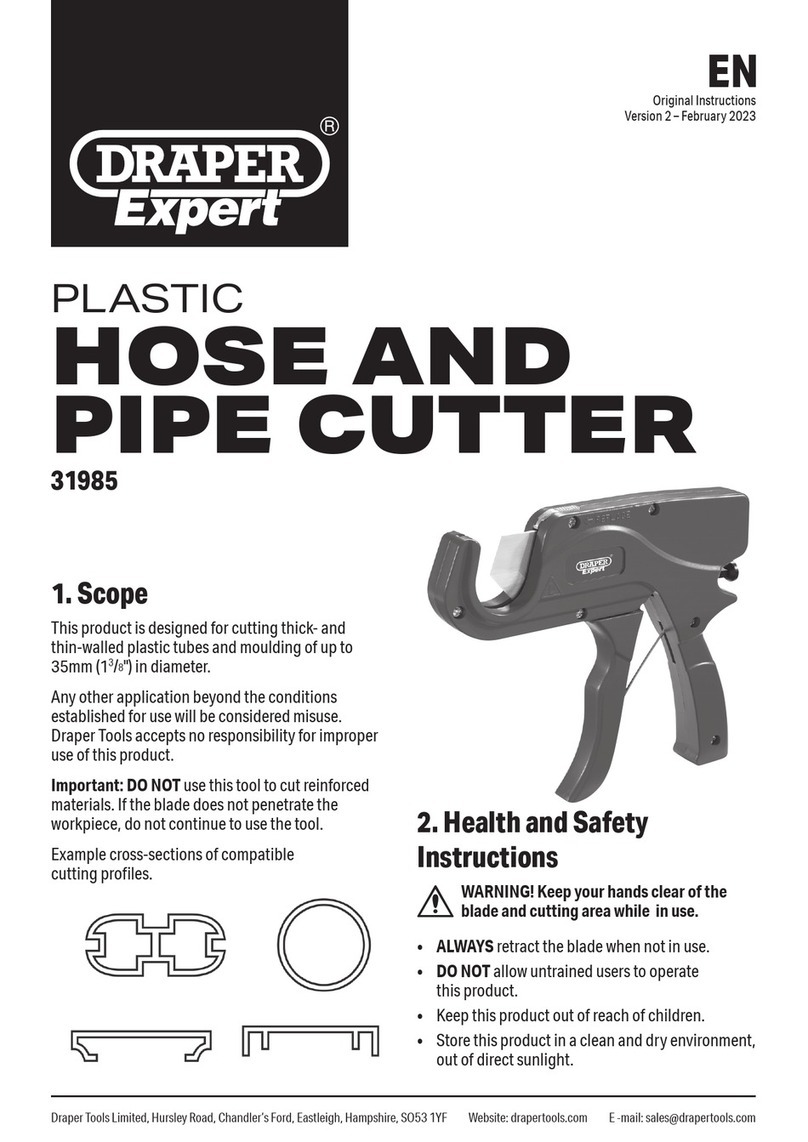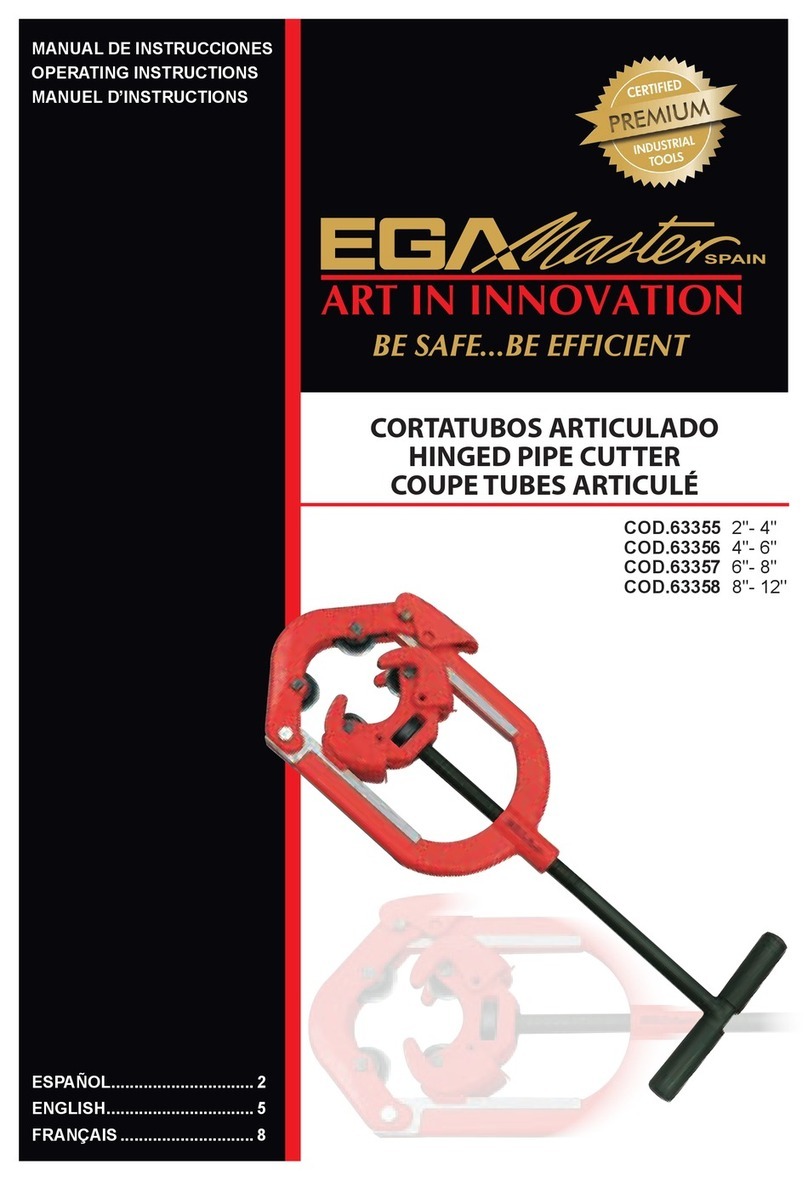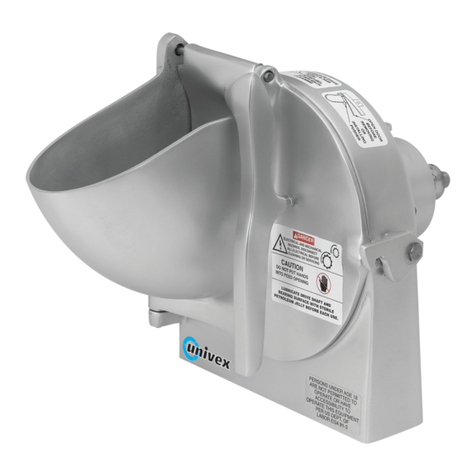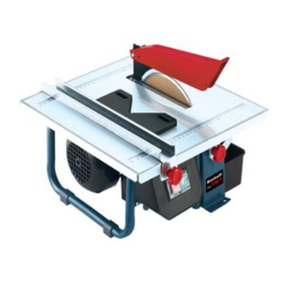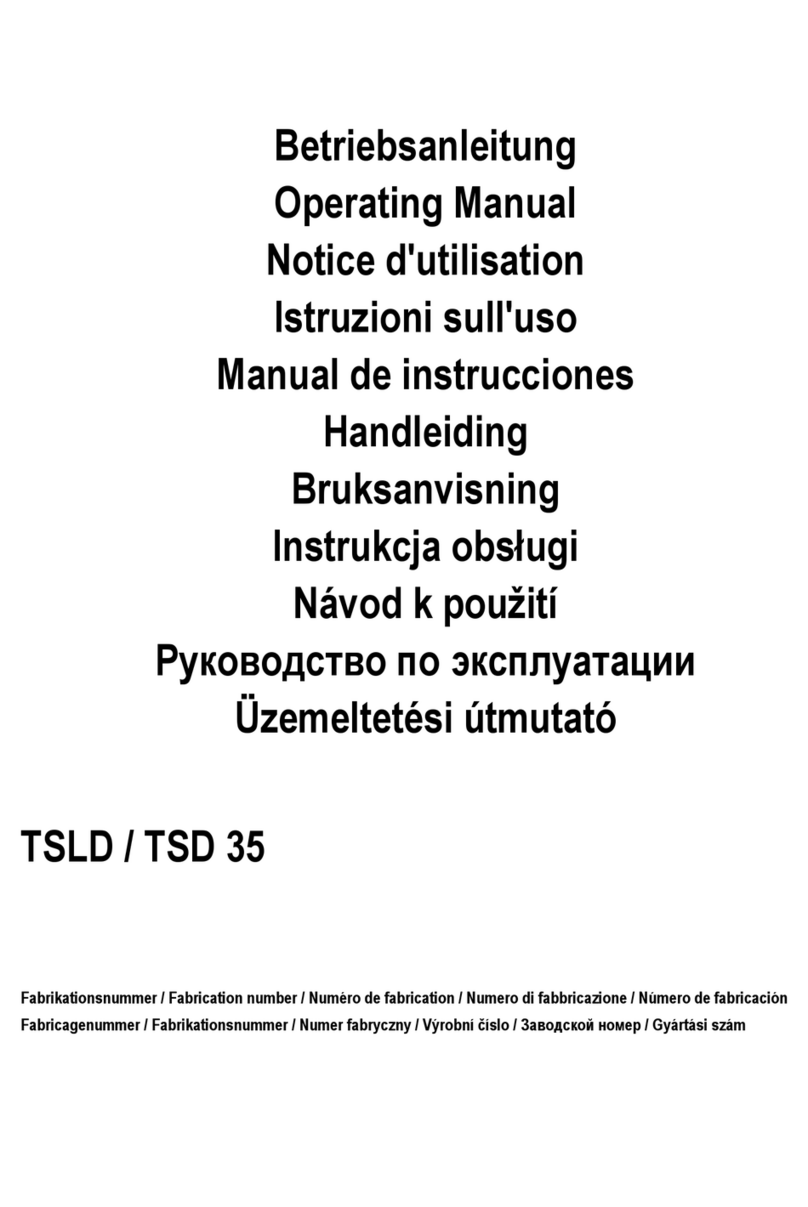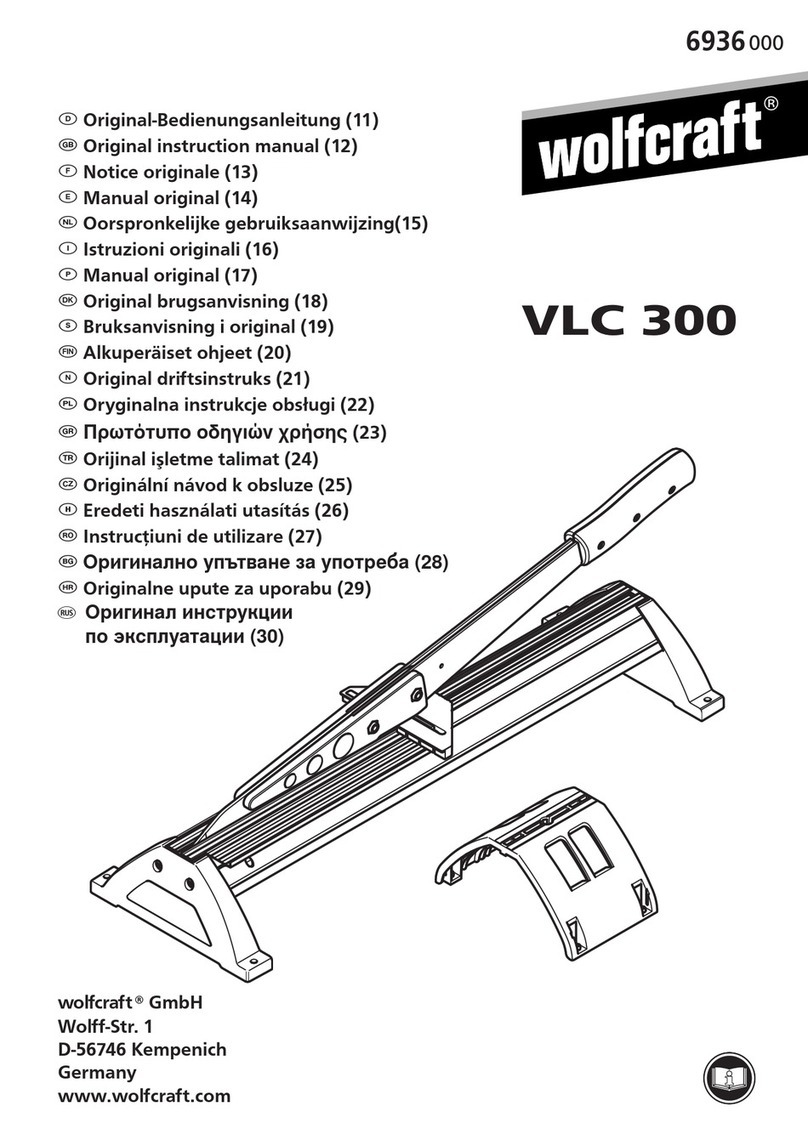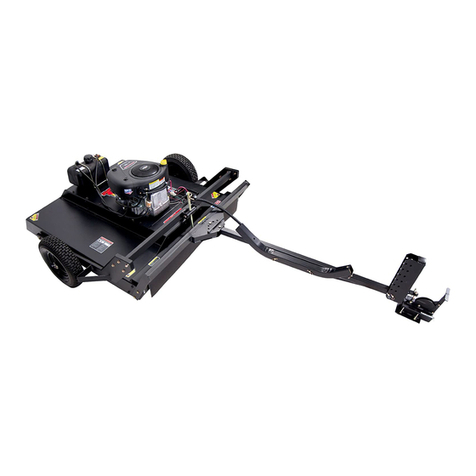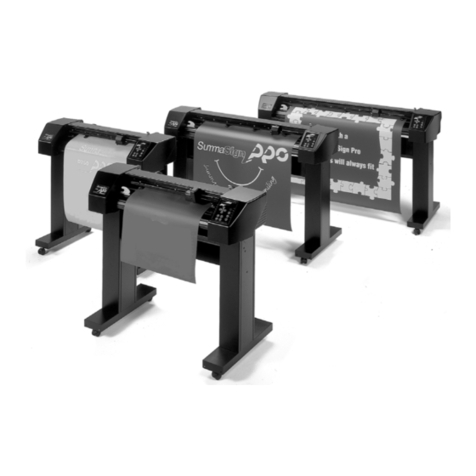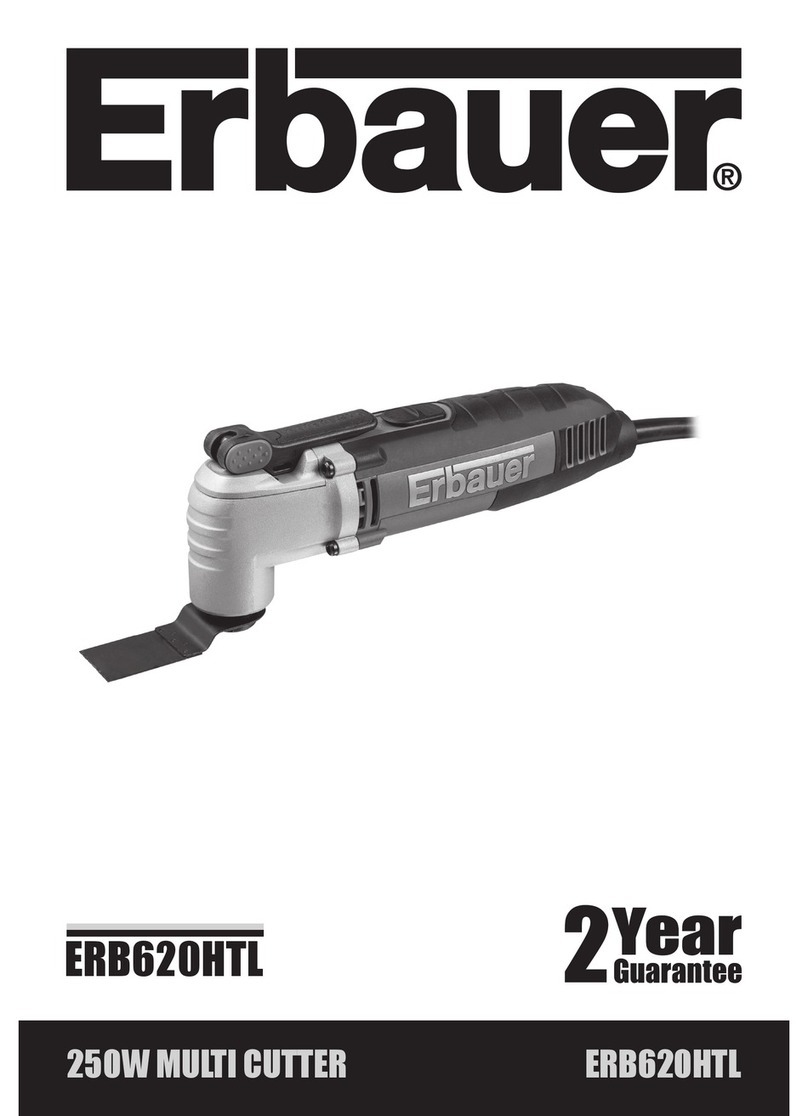Draper 70058 User manual

PLASMA CUTTER
70058, 70066
These instructions accompanying the product are the original instructions. This document is part of the product,
keep it for the life of the product passing it on to any subsequent holder of the product. Read all these instructions
before assembling, operating or maintaining this product.
This manual has been compiled by Draper Tools describing the purpose for which the product has been designed,
and contains all the necessary information to ensure its correct and safe use. By following all the general safety
instructions contained in this manual, it will ensure both product and operator safety, together with longer life of the
product itself.
All photographs and drawings in this manual are supplied by Draper Tools to help illustrate the operation of the
product.
Whilst every effort has been made to ensure the accuracy of information contained in this manual, the Draper
Tools policy of continuous improvement determines the right to make modifications without prior warning.

1. INTRODUCTION
1.1 SCOPE
Plasma cutting machine designed with advanced
inverter technology, producing a stable current while
reducing the weight and volume of the overall machine.
Suitable for the cutting of ferrous metals.
This product is intended for trade use with the quality &
features to meet and exceed the expectations of the
most demanding user. Any application other than that it
was intended for, is considered misuse.
This product is not a toy and must not be used by
children or any person with reduced physical, sensory or
mental capabilities or lack of experience and knowledge,
or people unfamiliar with these instructions.
Local regulations may restrict the age of the operator.
1.2 UNDERSTANDING THIS MANUALS
SAFETY CONTENT:
Warning! – Information that draws attention to the
risk of injury or death.
Caution! – Information that draws attention to the risk of
damage to the product or surroundings.
1.3 EXPLANATION OF SYMBOLS
Warning!
Read the instruction manual.
Warning!
Wear suitable welding eye/face protection.
Warning!
Wear ear defenders (During grinding
operations).
Warning!
Wear protective gloves.
Keep out of the reach of children.
Warning!
Danger of electric shock.
Danger of fire.
Danger of explosion.
Danger of fumes.
Danger of ultraviolet radiation.
Danger of burning splashes.
Fan cooled.
Duty cycle.
Input voltage.
Protection rating.
Thermal overload.
One pound-force applied to an area of one
square inch.
Range (Stock No.70058).
Net machine weight.
WEEE –
Waste Electrical & Electronic Equipment.
Do not dispose of Waste Electrical & Electronic
Equipment in with domestic rubbish.
Do not incinerate or throw onto fire.
For indoor use only.
Do not expose to rain.
Class 1 appliance
(Must be earthed).
UK Conformity Assessed.
European conformity.
–
2
–

–
3
–
2. SPECIFICATION
2.1 SPECIFICATION
Stock No. .............................................................. 70066
Part No. ................................................................ IPC40
Rated voltage .................................................. 230~50Hz
Input current .............................................................. 32A
Current range .................................................... 20 – 40A
Required air pressure.................... 58 – 72.5psi/4 – 5 bar
Cutting Thickness............................................. 1 – 12mm
Degree of protection.............................................. IP21S
Cooling ............................................................... Air (fan)
Insulation class.............................................................. F
Duty cycle............................... 60% at 40A, 100% at 25A
Dimensions ........................................426 × 16 × 285mm
Weight (Gross/Net/machine only) ............. 10.0/9.4/7.2kg
Stock No. .............................................................. 70058
Part No. ................................................................ IPC60
Rated voltage .................................................. 230~50Hz
Input current .............................................................. 32A
Current range .................................................... 20 – 60A
Required air pressure...................58 – 72.5psi / 4 – 5 bar
Cutting Thickness............................................. 1 – 15mm
Degree of protection.............................................. IP21S
Cooling ............................................................... Air (fan)
Insulation class.............................................................. F
Duty cycle............................... 60% at 60A, 100% at 40A
Dimensions ......................................530 × 210 × 390mm
Weight (Gross/Net/machine only) . 18.0kg/17.2kg/14.0kg
3. HEALTH AND SAFETY
INFORMATION
3.1 GENERAL SAFETY
INSTRUCTIONS
Warning! Read all safety warnings and all
instructions. When using electric tools basic safety
precautions should always be followed to reduce the risk
of fire, electric shock, and personal injury including the
following.
Read all these instructions before attempting to
operate this product and save these instructions.
Electric shock can kill:
– Remove the plug from the socket before carrying out
adjustment, servicing, or maintenance.
– Allow 5 minutes waiting time for the capacitors to
discharge before removing the panels for any
maintenance operations.
– Do not touch live electrical parts.
– Never use electrode holders or cables with damaged
or deteriorated insulation.
– Keep the working environment, equipment, cables,
and clothing free from grease, oil, moisture, and dirt.
– Ensure the welding machine has been correctly
earthed and all panels are fitted securely.
– The operator must be insulated from the floor and
workbench using a dry insulation mat.
– Wear isolating footwear and gloves that are in good
condition, i.e. without holes.
– In hazardous conditions of increased electric shock
always ensure a second person is present in case of
an accident.
– Never change electrodes with bare hands or damp
gloves (for ARC/MMA welders).
– Keep welding cables away from power cables.
– Regularly inspect the condition of the welding, earth,
and power cables for signs of damage.
– Do not leave the machine unattended and remove
the plug from the socket when not in use.
– Do not use welding cables unsuitable for the
amperage.
– Ensure the earth clamp is adjacent to the weld seam,
secured to bare metal and when not in use is
insulated for safety.
– Keep all equipment well maintained.
– The operator shall prevent gas cylinders in the
vicinity of the workpiece from becoming part of the
welding circuit.
Fumes & Gases can be harmful:
– The welding process generates hazardous fumes as
a by-product. Inhalation of these fumes is hazardous
to health.
– Keep your head away from the weld to avoid
breathing the fumes.
– If welding in confined spaces ensure adequate
ventilation and use a fume extractor.
– Welding fumes displace oxygen. The danger of
suffocation.
– By-products of welding can react with other chemical
vapours to produce a toxic/explosive environment.
Welding can cause fire or explosion:
– Arc welding and allied processes can cause fire and
explosions and precautions shall be taken to
prevent these hazards.
– Before starting a weld ensure the area is clear of
flammable materials.
– Remove any inflammables to a safe distance,
especially substances likely to generate a dangerous
vapour.
– The welding arc can cause serious burns. Avoid
contact with skin.

–
4
–
– Sparks and molten metal are cast out during
welding. Take precautions to prevent fire igniting and
wear protective clothing.
– Sparks and molten metal can pass through gaps. Be
aware that fire can start out of sight. Flammables in a
locked cabinet may not be safe.
– Do not weld pressurised containers.
– Do not weld tanks, drums, or other vessels until they
have been correctly cleaned/prepared for welding.
– Always have appropriate and fully maintained
fire-fighting equipment suitable for the materials used
and for use in electrical environments available in
close proximity at all times.
– Keep clothing free from oil and grease.
– Wear a hat, flame-proof apron, woollen clothing,
gloves, long sleeve tops with closed neck, trousers
(without turn-ups) to cover non-slip boots.
– Protective head and shoulder coverings should be
worn when overhead welding.
– Avoid taking any fuels with you e.g. cigarette lighters
or matches.
– Hot spots and their immediate surroundings should
be observed until their temperature has dropped to
normal.
Personal Protection:
– The body should be protected by suitable clothing.
– The use of neck protection may be necessary
against reflected radiation.
– Wear safety glasses when chipping, wire brushing,
grinding, or when near cooling welds as metal filings
or slag can be thrown up. Fully enclosed goggles are
advisable.
– Arc machines generate a magnetic field which is
detrimental to pacemaker recipients. Consult your
doctor before going near welding equipment/
operations.
– The UV and IR radiation generated by welding is
highly damaging to the eye, causing burns. This can
also affect the skin. Protect the eyes and face.
– The face and eyes shall be protected by suitable
welding shields equipped with appropriate ocular
protection filters.
– Where environments are subject to pedestrians and
traffic ensure a protective screen is used to avoid
accidental arc glare.
- Do not weld in the vicinity of children or animals and
ensure no one is looking before striking up.
– In the welding environment, damaging levels of noise
can exist. Wear hearing protection if the process
dictates.
– Do not touch hot equipment or metal. Allow the weld
time to cool, use the correct tool and wear protective
welding gauntlets.
– Wear flame retardant clothing (leather, wool, etc.).
– Take care when adjusting or maintaining the torch
that it has had time to cool sufficiently and is
disconnected.
– The arc generates
• ultra-violet radiation (can damage skin and eyes);
• visible light (can dazzle eyes and impair vision);
• infra-red (heat) radiation (can damage skin and
eyes);
– Such radiation can be direct or reflected from
surfaces such as bright metals and light coloured
objects.
Gas cylinders:
– Gas cylinders should be located or secured so that
they cannot be knocked over.
– Shield gas containers can explode if damaged. Take
care when handling.
– Ensure gas cylinders are shut-off when not in use
and between operations.
– Take care that no build-up of gas is permitted to form
in confined areas.
– Cylinders must be in an upright position at all times
during use and storage.
– The gas cylinder must never come in contact with
the electrode.
– Follow the manufacturer’s instructions for handling,
storing, and using the gas bottle correctly and safely.
– Use the correct equipment to connect the gas bottle
to the welding torch.
Limitations:
– Do not use for:
• operations in severe conditions (e.g. extreme
climates, freezer applications, strong magnetic
fields, etc.);
• operations subject to special rules (e.g.
potentially explosive atmospheres, mines, etc);
• operations that require ingress protection greater
than IPX0, e.g. in rain or snow, etc;
General:
– Training should be sought out in
• the safe use of this equipment;
• the processes;
• the emergency procedures;
– Welding power sources are not to be used for pipe
thawing.
– Take precautions against toppling over, if the power
source shall be placed on a tilted plane.
– All equipment should be kept in good working
condition, inspected and, when defective, promptly
repaired or withdrawn from service - All equipment
should be placed so that it does not present a
hazard in passageways, on ladders, or stairways,
and should be operated in accordance with the
manufacturer’s instructions.
– In the vicinity of an arc, non-reflective curtains or
screens shall be used to isolate persons from
the arc

–
5
–
radiation. A warning, e.g. a symbol for eye
protection, should refer to the hazard of arc
radiation.
3.2 ADDITIONAL SAFETY
INSTRUCTIONS FOR CUTTING
− Cutting and allied processes can cause fire and
explosions and precautions shall be taken to prevent
these hazards.
− Before starting a cut ensure the area is clear of
flammable materials.
− Remove any inflammables to a safe distance,
especially substances likely to generate a dangerous
vapour.
− The cutting flame can cause serious burns. Avoid
contact with skin.
− Sparks and molten metal are cast out during cutting.
Take precautions to prevent fire igniting and wear
protective clothing.
− Sparks and molten metal will pass through gaps. Be
aware that fire can start out of sight. Flammables in a
locked cabinet may not be safe.
− Do not cut pressurised containers.
− Do not cut tanks, drums or other vessels until they
have been correctly cleaned/prepared for welding.
4. UNPACKING AND
CHECKING
4.1 PACKAGING
Carefully remove the product from the packaging and
examine it for any sign of damage. Check contents
against the parts shown in Fig A. If any part is damaged
or missing, please contact the Draper Help Line (see
back page). Do not attempt to use the product!
The packaging material should be retained during the
warranty period, in case the product needs to be
returned for repair.
Warning!
• Some of the packaging materials may be harmful to
children. Do not leave any of these materials in
reach of children.
• If any of the packaging is to be thrown away, make
sure they are disposed of correctly, according to local
regulations.
5. IDENTIFICATION
5.1 RATING PLATE
Stock No.70058
DTL SO53 1YF. UK.
Serial No.:
IEN 60974-1:2005
20A/88V – 60A/104V
X 60% 100%
60A4 0A
104V
Class F
96V
I
2
U
2
U
0
=240V
U
1
=230V
IP21S
I
1MAX
=36.5A I
1eff
=23A
f
1
f
2
1~
1~50/60Hz
U
I
IP21S
Unit’s
protection class
rating.
U
I
Constant
current.
Plasma cutter.
Do not
dispose of
WEEE* as
unsorted
municipal
waste.
Semiconductor
diode rectifier.
†
UK
Conformity
Assessed.
1~50/60Hz
Power supply
identifier, e.g.
socket with 3
poles.
European
conformity.
Direct Current
(DC) delivery.
†
U
0
=240V
Secondary
no-load
voltage.
f1f2
Inverter
frequency
conversion
stage.
†
U
1
=230V
Rated supply
voltage.
Transformer.
†
X
Rated duty
cycle.
Fan cooled.
I
2
Welding
current
(AMPS)
Indoor use
only. Do not
expose to rain.
U
2
Welding
current
(VOLTS)
Class F
Unit’s
Insulation
rating.
I
1MAX
=36.5A
Unit’s
maximum
absorbed
current
(AMPS)
†
Symbols can be combined,
for example:
f
1
f
2
1~
Single Phase D.C plasma
cutter.
I
1eff
=23A
Unit’s
effective
absorbed
current
(AMPS)
*
Waste Electrical & Electronic Equipment

(1) LED amperage display.
(2) Amperage control knob.
(3) Plasma torch.
(4) Earth clamp.
(5) Torch connection.
(6) Trigger connection.
(7) Pilot arc ignitor.
(8) Earth clamp connection.
(9) Compressed air feed.
(10) 2nd Earthing point (70058 only).
(11) Power ON/OFF switch.
(12) Compressed air regulator.
(13) Air pressure gauge.
(14) Gas test button (70058 only).
(15) Power on and thermal overload LED indicators.
(16) Carry handle.
(17) 2T/4T torch control switch (70058 only).
(18) 10S/20S control switch (70066 only).
–
6
–
5.2 PRODUCT IDENTIFICATION – FIG.A
FIG.A
(2)
(1)
(1)
(16)
(16)
(3)
(4)
(2)
(3)
(4) (8) (7) (6) (5) (10)
(12)
(13)
(12)
(9)
(11)
(14)
(15)
(15)
(17)
70058
70066
(5) (6) (7) (8) (9)
(11)
(18)
(13)
Note: For details of our full range of accessories and consumables, please visit drapertools.com

–
7
–
6. ASSEMBLING THE
PLASMA CUTTER
6.1 CONNECTION TO THE POWER
SUPPLY
Make sure the power supply information on the product’s
rating plate is compatible with the power supply you
intend to connect it to.
A suitable plug must be fitted by a qualified
electrician.
This product’s wiring has insulation stripped in
preparation for wiring a 32A plug (not supplied).
It is designed for connection to a 32 amp power supply
rated at 230V AC.
Because it is constructed mostly of metal parts, it is a
Class 1 machine; meaning, it must have an earth
connection in the power supply. This is to prevent
electrocution in the event of a failure.
Note: Remove the plug from the socket before carrying
out adjustment, servicing or maintenance.
Check that the electrical supply delivers the voltage and
frequency corresponding to the product and that it is
fitted with a delayed fuse suited to the maximum
delivered rated current.
Note: This product has been set to the highest voltage
at the factory.
6.2 CONNECTION TO THE AIR SUPPLY
– FIGS.1 – 3
This product has been designed to be operated in
conjunction with a compressed air supply.
Note: Do not use the product in conjunction with oxygen,
or any other gasses.
− Using an appropriate hose and fittings combination,
connect the product to an air supply that adequately
meets the demands of the product’s specifications.
Note: Draper Stock No.70058 is supplied with an
integrated air regulator and moisture trap.
1– Stock No.70058 shown.
FIG.
2– Stock No.70066 shown.
FIG.
3– Recommended air supply set up.
FIG.
6.3 CONNECTING THE EARTH
CLAMP – FIG.4
− With the lug on the pin at top, push the connector
fully into the port (8) then turned clockwise 180° to
lock hand tight only.
4– Stock No.70066 shown.
FIG.
6.4 ATTACH THE TORCH – FIG.5
− To connect the torch trigger connector (6.1), align the
2 pins and push to fit, then secure using the outer
ring (6.2) screwing it onto trigger port (6).
− Remove the threaded knob of the pilot arc ingnitor
(7)and place the terminal of the red lead over the
post, then replace the knob and tighten.
y
Quick coupler
Water separation
Nipple
Regulator
Drain daily
Air suppl
Air line hose
(8)
(8.1)

–
8
–
− The torch connector(3.1) is a screw fit onto port (5).
5– Stock No.70058 shown.
FIG.
6.5 TORCH ASSEMBLY – FIG.6
Warning! Under no circumstances must the plasma
nozzle be removed or any other work be carried out on
the torch with the machine switched on. Ignoring this
precaution could lead to serious burns or contact with
high DC voltages.
If the machine has just been used for cutting, allow the
cooling air to stop before switching the machine off for
torch servicing.
The torch should be kept free of slag at all times to
ensure the free passage of air.
To assemble / dismantle the torch:
− Invert the torch so the tip points upwards.
− Unscrew and remove the shield cup.
− Remove the tip, swirl baffle and electrode.
− Ensure the torch head thread is upper most.
− Fit electrode into end of torch head.
− Fit swirl baffle onto electrode, ensure is it seated fully
onto the electrode.
− Fit tip onto the swirl baffle.
− Fit shield cup and screw on.
− The tip and electrode need replacing when worn.
− Indication of wear are a loss off cutting capacity or
that the cut is no longer 90°.
− When inspecting the tip look for erosion of the hole in
the centre of the tip or a build up of metal residue.
− When inspecting the electrode look for erosion in
centre of the electrode.
6– Image is representative only.
FIG.
7. OPERATION
7.1 BASIC OPERATIONAL
PROCEDURES
− Check all safety instructions have been observed.
− Check correct air supply is connected.
− Drain any water from bowl on the filter regulator (if
fitted).
− Set machine to required current range according to
the thickness of metal to be cut.
Warning! DO NOT change the current range while
cutting.
Caution! DO NOT attempt to cut material beyond the
range specified, as this will damage the torch.
− Check the torch consumables are in good condition.
− Check torch and earth lead connections are tight.
− Connect return lead to the work piece, using an area
free of rust and paint, for a good contact.
− Connect to mains supply and switch on. The power
LED will illuminate.
− Adjust air pressure to the required setting.
− Set the cutting current via the current control, an
indication of the setting will be shown on the LED
amperage display.
− Adjust the post gas control, if cutting at a high current
setting or making a long cut set the control near
maximum, this will give a longer cool time for the
torch.
− Place the torch at the edge of the work piece with the
centre of the tip slightly beyond the edge. Press the
torch trigger. The air will flow after a short delay the
arc will ignite. The torch should be moved steadily
along the work piece at a rate slow enough for the
metal to be cut right through in one pass. If the cut
penetration is incomplete, then the torch could be
damaged. (While the air is flowing, check it is still at
the correct pressure setting.)
− When the cut is complete, release the torch trigger
button. The arc will immediately extinguish, but air
will continue to flow for a short time. DO NOT turn
the machine off until this cooling air has stopped
flowing as this is necessary to prevent damage to the
torch.
Piercing:
When piercing, the torch head should be angled back so
as to allow the molten material to escape to one side.
The normal angle of cut can be resumed once the metal
has been pierced.
Caution! Piercing will reduce the life of the torch.
Note: For details of our full range of accessories and
consumables, please visit drapertools.com
(6.1)
(7)
(3.1)
(5)
(6.2)

8. MAINTENANCE AND TROUBLESHOOTING
8.1 TROUBLESHOOTING GUIDE
Problem Possible Cause Required Action
– Plasma arc will not start. – Unit not powered up. – Check mains supply, on/off
switch is on.
– Work clamp connection. – Check ground clamp has a
good connection to the material
being cut, clean surface of
material if it is dirty or corroded.
– Air supply is low pressure. – Check air is flowing from the
torch tip with cut switch
pressed. Check the compressor
is maintaining 60psi at the
gauge while cutting is in
progress. Check the regulator
fittings have been assembled
properly using PTFE tape.
– Check the cutting tip is not
blocked by molten metal
splatter.
– Thermal cut-out light on front
panel of unit comes on.
– Switch machine off and wait
about 2-3 minutes, Switch
machine back on. This can
occur if the unit is overheating
due to a high ambient
temperature.
– Use 32A cable for power lead
extensions, a standard 13A type
is unsuitable if a long extension
is required. If the voltage at the
unit ‘dips’ below the minimum
value as the arc strikes the unit
will turn off and the OC light will
come on.
– Try operating the cutter at 20A
set current, if this is OK then
there is a problem with the
stability of the mains supply to
the unit. Use a different power
source or thicker mains cable to
connect to the unit mains lead.
– Torch Assembly / Air flow. – Check the torch has been
assembled correctly. Note the
presence and position of the
swirl ring.
– Wait for air flow to finish flowing
before operating cutting switch.
Plasma will not start if air is
already flowing from nozzle
when the cutting switch is
pressed.
–
9
–

–
10
–
8. MAINTENANCE AND TROUBLESHOOTING
Problem Possible Cause Required Action
– Plasma arc stops while cutting – Hand too tense, inadvertently
releasing the cut switch.
– Hold the torch lightly against the
material being cut, don’t push
down. Try and relax the hand.
– Cutting speed too slow. – If all material cut from under the
arc the arc will extinguish.
– Torch moved too far away from
material.
– Move torch closer to the metal
to be cut.
– Compressor unable to keep up
with air demand.
– Check air pressure gauge
reading when cut stops.
– Check air pressure gauge is
reading 60psi with cut switch
pressed.
– Check torch lead connections at
unit and torch are tight.
– Check torch hose is
undamaged.
– Check compressor, give the
compressor time to recover if
making long cuts when using a
smaller compressor. Check the
regulator fittings have been
assembled properly using PTFE
tape.
– Sparks are shooting upward not
downward through the material.
– Plasma arc not piercing
material.
– Torch travel speed too fast.
– Check grounding clamp is
making a good connection to
the material being cut and is
tightly connected at the unit.
Clean a patch of material for
clamp if rusty
– Increase current.
8.2 MAINTENANCE
Note: Remove the plug from the socket before carrying out adjustment, servicing or maintenance.
Regular inspection and cleaning reduces the necessity for maintenance operations and will keep your tool in good
working condition.
The plasma cutter must be correctly ventilated during tool operation. Avoid blocking the air inlets and vacuum the
ventilation slots regularly.
Do not use solvents or fuels to clean the product. When not in use, store the product in a safe, dry place.

–
11
–
9. WARRANTY
9.1 WARRANTY
Draper tools have been carefully tested and inspected
before shipment and are guaranteed to be free from
defective materials and workmanship.
Should the tool develop a fault, please return the
complete tool to your nearest distributor or contact:
Draper Tools Limited, Chandler’s Ford, Eastleigh,
Hampshire, SO53 1YF. England.
Telephone Sales Desk: +44 (0)23 8049 4333 or:
Product Helpline +44 (0)23 8049 4344.
A proof of purchase must be provided.
If upon inspection it is found that the fault occurring is
due to defective materials or workmanship, repairs will
be carried out free of charge. This warranty period
covering is 12 months from the date of purchase except
where tools are hired out, when the warranty period is
90 days from the date of purchase. This warranty does
not apply to any consumable parts, any type of battery
or normal wear and tear, nor does it cover any damage
caused by misuse, careless or unsafe handling,
alterations, accidents, or repairs attempted or made by
any personnel other than the authorised Draper
warranty repair agent.
Note: If the tool is found not to be within the terms of
warranty, repairs and carriage charges will be quoted
and made accordingly.
This warranty applies in lieu of any other warranty
expressed or implied and variations of its terms are not
authorised.
Your Draper warranty is not effective unless you can
produce upon request a dated receipt or invoice to verify
your proof of purchase within the warranty period.
Please note that this warranty is an additional benefit
and does not affect your statutory rights.
Draper Tools Limited.
10. DISPOSAL
10.1 DISPOSAL
– At the end of the machine’s working life, or when it
can no longer be repaired, ensure that it is disposed
of according to national regulations.
– Contact your local authority for details of collection
schemes in your area.
In all circumstances:
• Do not dispose of power tools with
domestic waste.
• Do not incinerate.
• Do not dispose of WEEE*
as unsorted municipal waste.
*Waste Electrical & Electronic Equipment.
NOTES
This manual suits for next models
3
Table of contents
Other Draper Cutter manuals
Popular Cutter manuals by other brands

Blue Diamond
Blue Diamond Multi-Purpose Cutter Operation and parts manual

EGAmaster
EGAmaster REBARMATIC-16 operating instructions

Far Tools
Far Tools SC 150B Original translation
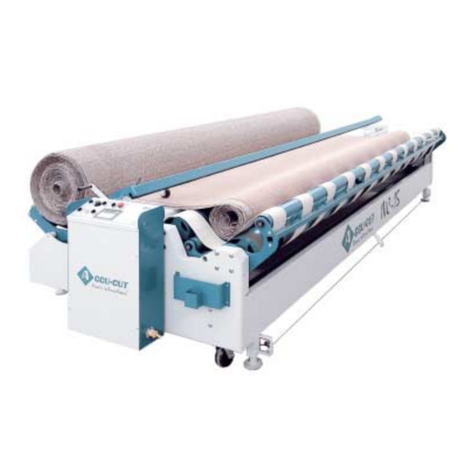
Accu-Cut
Accu-Cut IVC 15 Operator's manual
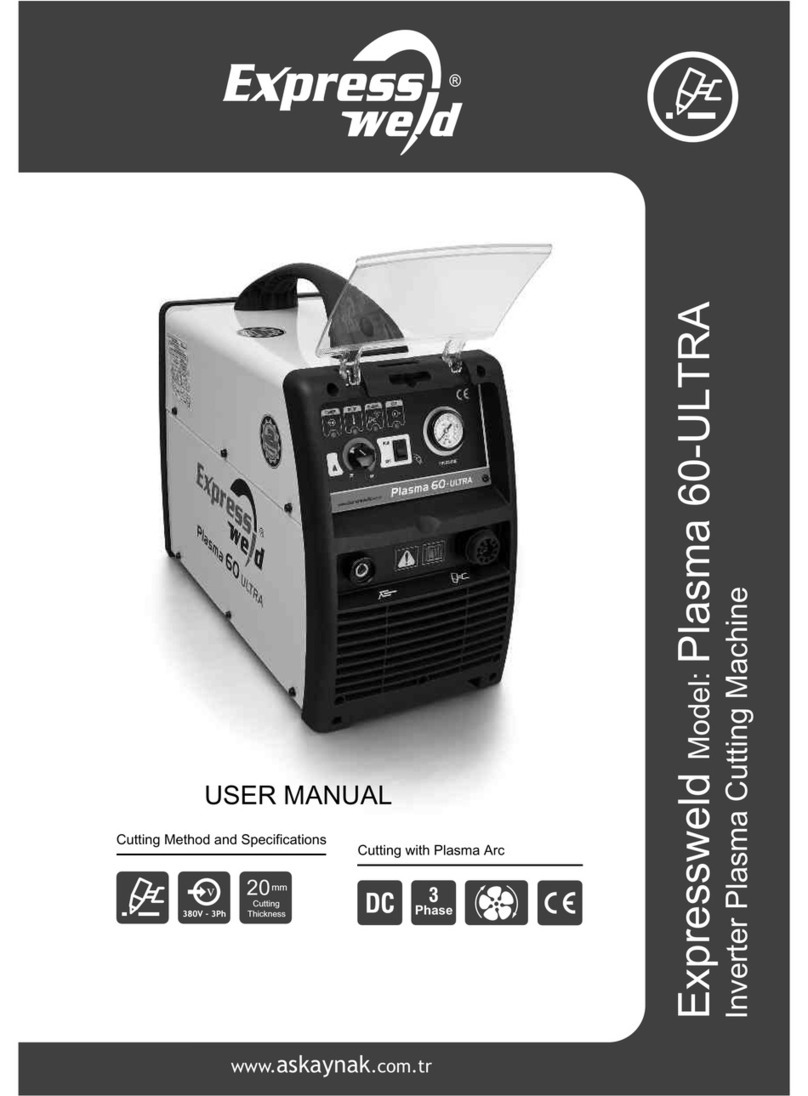
ExpressWeld
ExpressWeld Plasma 60 - Ultra user manual

Central Pneumatic
Central Pneumatic 90114 Assembly and operating instructions
